
When spores multiplythe fungus spreads to the skin of the feet and nails, penetrates the blood through microcracks and is transported with the bloodstream to all internal organs.
Which fungus develops on the toes?
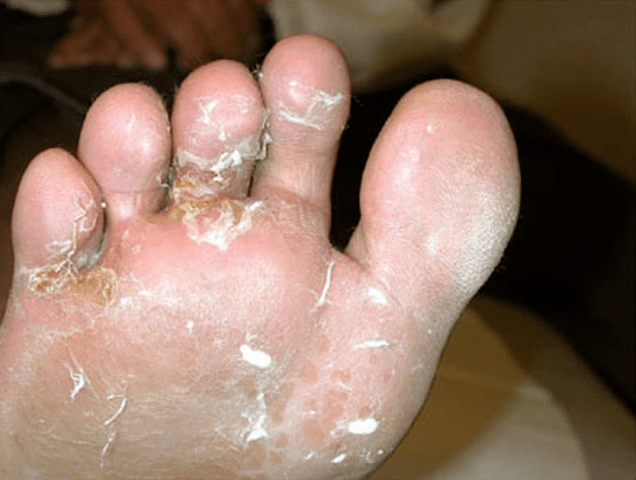
- The mycosis of the toes is caused by the pathogenic anthropophilic microorganism tinea pedis. caused. . .
- The causative agents of the disease are less common molds and yeast-like fungi of the genus Candida.
- The preferred habitat of the fungus are the skin folds between the fingers, where it is warm and moist.
- As the microorganism multiplies, the microorganism's spores also spread under the toes and then throughout the foot.
- The primary infection with the fungus occurs in public places: baths, swimming pools, saunas, in changing rooms of fitness studios.
- Microorganisms tolerate low temperatures, overdrying of the surface perfectly, can remain in clothing, carpets, shoes for a long time and, on occasion, adhere to the skin of the feet.
- The transmission of the organism often takes place within the familywhen using general hygiene items, slippers, manicure tools.
- When microorganisms get on the skin, they can remain in a dormant state for a long time. Active spore growth begins with the onset of favorable conditions, that is, with a decrease in the immunity of an infected person
- If the spores get on the skin of a person who has a chronic disease or who does not adhere to hygiene rules, mycosis begins to develop almost immediately.
- It is particularly important for patients with chronic diseases to know what the fungus looks like on their fingers, as they are more likely to become infected with the pathogen.
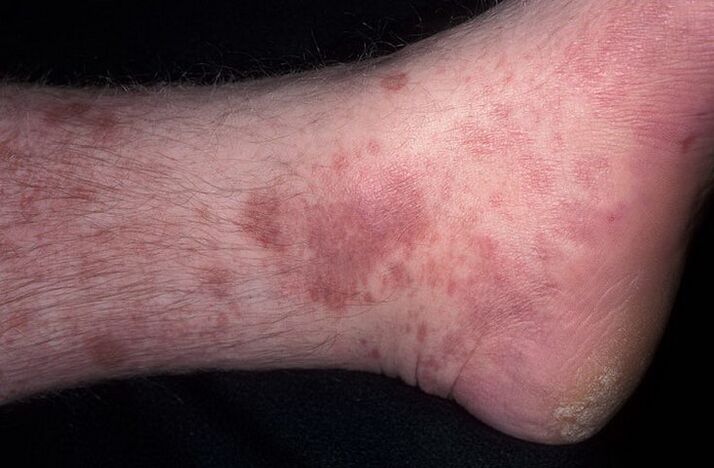
- malfunctions of the endocrine system;
- poor blood circulation in the limbs, Phlebeurysm;
- Flat feet,Contribution to increased skin friction;
- systematic stress;
- Periods of hormonal changes in the body: pregnancy, menopause, youth;
- Inflammation of the lymphatic system;
- post-operative or post-traumaticdecreased immunity. . .
The growth of the fungus is promoted by sweating of the feet, shoes made of synthetic materials, and micro-injuries to the skin.
Improper nutrition creates favorable conditions for the growth of spores: abuse of sweets, flour, fatty foods, alcoholic beverages.
Toe fungus is rarely diagnosed in children. The main cause of mycoses in a child is poor hygiene.
Symptoms and forms of the disease
It is possible to suspect the development of an infection on the feet at the initial stages, even before visual signs of mycosis appear.The first sign of infection is peeling and itching of the skin.. . .
When microorganisms begin to invade the epidermis, the surface of the fingers becomes covered with small scales and cracks.
An unpleasant odor emanates from the feet. The specific symptoms depend on the form of the disease:
- Turned off.Small cracks and light flaking appear under the fingers and on the surface.
- Squamous cell hyperkeratotic.There is severe itching, burning, the formation of white crusts on the fingertips.
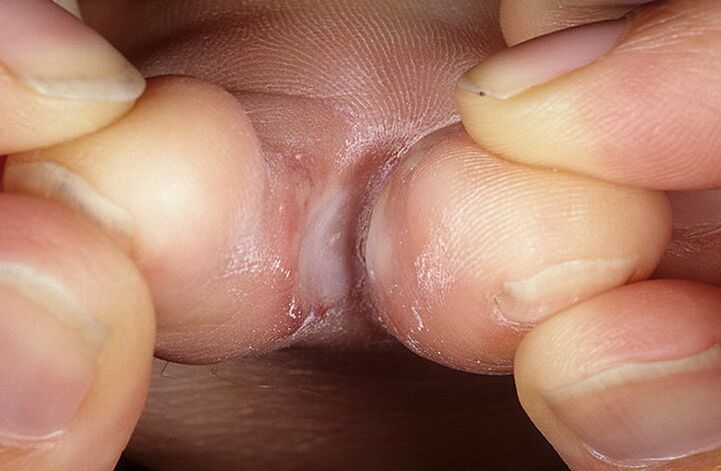
- Intertriginous.There is swelling, reddening of the skin, moisture build-up between the fingers, peeling of the skin, formation of deep cracks.
- Dyshidrotic.It is manifested by the rash of small vesicles filled with serous fluid. Severe itching, erosion at the site of the bursting blisters, the entire foot becomes inflamed.
IMPORTANT! In the later stages of the disease, the fungus penetrates the surface of the nails and begins to change their color and structure. Nails become covered with colored spots, deformed, crumble.
diagnosis
- When the first clinical signs of infection appear, it is necessary to consult a doctor for diagnosis.
- Despite the fact that the symptoms of the fungus are also clearly visible in the photo,Only a specialist can identify a particular pathogen.
Laboratory tests are prescribed to the patient:
- Microscopy of skin particles.
- Bacterial culture from scratch and liquid from vesicles.
- DNA research of biomaterials.
- Blood analysis.
treatment

- The main activities are -thorough skin hygieneand treatment with topical antifungal drugs.
- In the later stages of the development of a fungal infection, doctors prescribe oral antifungal drugs.
- As an addition to medicines, folk remedies and physiotherapeutic procedures are used.
- It is possible to cure the fungus on the toes by carefully following the doctor's recommendations without reducing the time of taking the prescribed drugs.
medication
Drug treatment includes the use of two groups of drugs:
- External preparations: ointments, creams, gels, sprays.
- Preparations for oral administration.
IMPORTANT! The complex of therapeutic measures also includes a special diet, the use of immunostimulants and means for restoring the intestinal microflora.
physical therapy
In addition to drug treatment, physiotherapeutic procedures accelerate the healing process:
- UV exposure of the skin. . . The rays penetrate the skin to a depth of 0. 6 mm and kill fungal spores in it. The duration of the sessions is 15-20 minutes. In the early stages of infection, the use of UV radiation avoids the use of antifungal drugs.
- Diathermy,Amplipulse therapy, UHF therapy to improve peripheral blood circulation.
- Laser irradiation of the skin. . . Skin irradiation suppresses inflammation, relieves itching, dries damp areas.
Traditional methods

As an addition to drugs prepared according to folk recipes, they are very effective.
According to reviews, effective assistance is provided by:
- Baths with soda and salt. . . 1 tablespoon. l. Salt and soda are dissolved in 2 liters of water, 10 drops of iodine are added. The feet are immersed in the solution for 15 minutes. The procedure is carried out before the application of the antifungal drug.
- Trays with decoction of potato peel. . . The broth is soaked in the broth, which is otsuzhenny to a comfortable temperature, for 20 minutes, and then washed. The procedure is done daily until the symptoms go away.
- Trays with a decoction of aspen bark. . . 100 g of chopped bark is poured into 500 ml of boiling water and insisted until it cools. The resulting infusion is added to the bath.
- Garlic ointment. . . 2 large cloves of garlic are crushed to a pulp and mixed with 100 grams of butter. The ointment is applied to the steamed skin for 10-15 minutes a day for a month.
- Decoction applicationsMedicinal herbs. A number of chamomiles and violets, 2 tablespoons each, are poured with a liter of boiling water and insisted for 2-3 hours. Gauze soaked in infusion is applied to the inflamed areas for 30 minutes a day.
- Compress with burdock leaf. . . A fresh burdock leaf is knocked off with a hammer, the legs are wrapped in it, secured with a bandage, and socks are put on. The compress is changed 2 times a day. The course duration is 21 days.
- Carrot juice applicationsand vinegar. 1 tablespoon. l. Carrot juice and 9% vinegar are mixed and applied to the inflamed areas with a tampon.
- Egg and vinegar ointment. . . A raw egg is poured with 100 ml of vinegar essence (70%) and insisted for 7 days. Mix the dissolved egg with 100 grams of butter, beat. The resulting emulsion is smeared with subdued legs, wrapped in foil and put on socks. The process is repeated daily until the fungus is completely cured.
- Compress with ammonia. . . Add 1 tablespoon to 200 ml of water. l. Ammonia, moisten gauze in a solution, wrap your feet in it and put on socks. The compress is made in the evening and left until morning. The total number of procedures is 9-10.
Several interesting recipes for treating mushrooms. The use of traditional medical methods necessarily requires the consent of the attending physician.
Complications
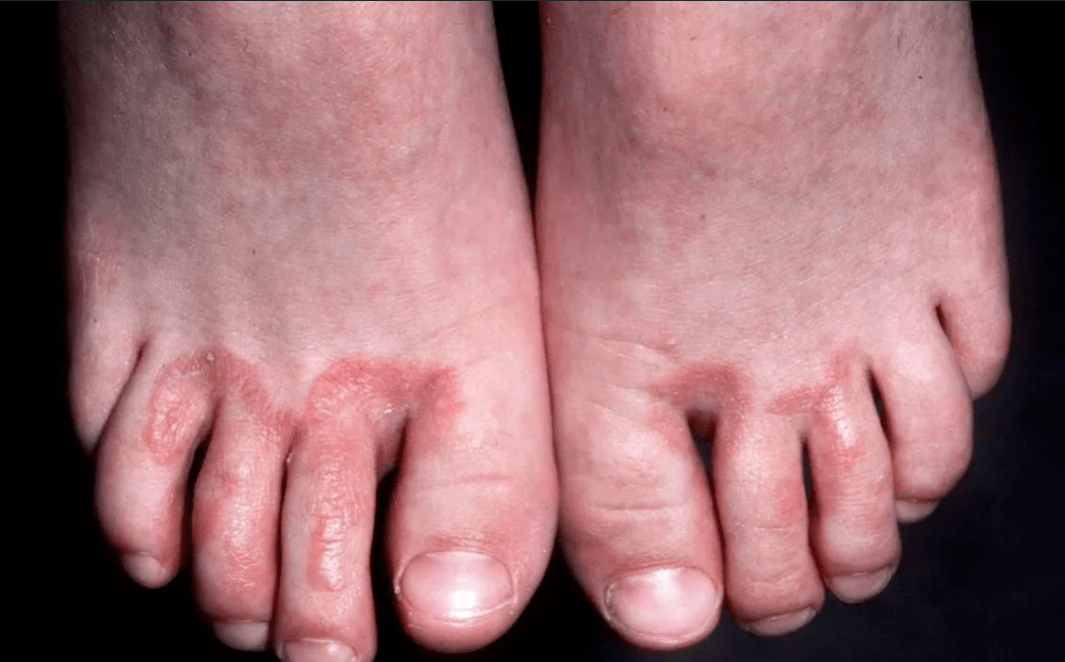
The infection spreads in the body and penetrates the bloodstream, affects the internal organs and negatively affects the functioning of the entire organism:
- Long-term exposure to fungal toxins causes allergic reactions, exacerbation of bronchial asthma, dermatitis.
- Penetration into the blood disrupts the work of internal organs.
- Deep mycosis causes diabetes mellitus to progress, and against this background gangrene and bone infections can develop.
prophylaxis
An organism with a strong immune system is able to withstand any infectious disease. Therefore, the main measure to prevent fungal infection is to keep the body's defenses up.
Compliance with the rules of hygiene will help avoid infection with fungal spores:
- DailyChange of socks and tights;
- the use of breathable shoes made from natural materials;
- wear special shoes(Slippers, slippers) in public places;
- Foot skin treatmentspecial protective sprays when visiting pools, baths, beaches;
- perform a pedicurein a proven salon,where the disinfection of instruments is carried out correctly;
- Trying on shoes in a storein disposable socks. . . To prevent spores from persisting on various surfaces, they need to be antiseptic with a 45% vinegar solution.Washcloths and slippers should be replaced.Treat the rest of the shoes from the inside with a vinegar solution and place them in a plastic bag for 12 hours.
- Boil bed linen, socks, tights, and towels in a soap and soda solution for 10-15 minutes.
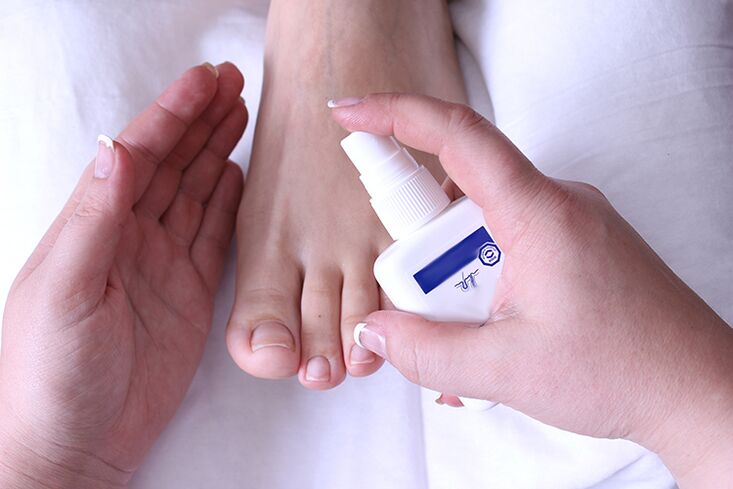
Toe fungus shouldn't be runTherefore, it is recommended to consult a doctor when the first symptoms appear.
Timely treatment will allow you to quickly fight the fungus and avoid complications. It is necessary to treat mycoses until symptoms are completely eliminated and the skin is restored.
Fungus on the little toe: causes, symptoms (PHOTOS) and methods of treatment
Fungal nail or athlete's foot always begins with the defeat of the outermost toes.
Most of the time, the big toe is the first to suffer as its nail is the largest, but in some cases the fungus appears on the little toe first.
Such onychomycosis is dangerous due to the rapid destruction of the nail plate, which is associated with the small size of the nail on the little finger.
The reasons for the development of the disease
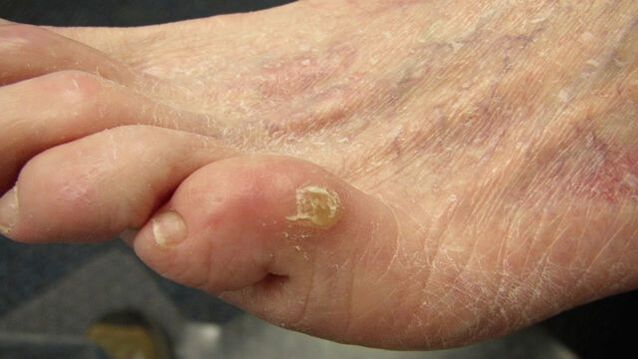
Toenail fungus most commonly starts with damage to the outer toes
Fungus on the little toe is the result of poor personal hygiene when visiting public places. Fungal spores get on the skin in public showers and swimming pools. This is because the fungus actively reproduces in a humid and hot environment.
Another reason for the development of the disease is profuse sweating and microtrauma of the nail plate. In this case, you can get the disease while trying on other people's shoes, towels or manicure tools.
Most often, fungus on the little finger of the hand occurs through contact with an infected person. Careless handshakes can cause spores to get under the nail plate.
The main condition for the development of the disease is a decrease in general and local immunity. Hyperhidrosis, trauma and damage, circulatory disorders in the extremities - all this leads to a decrease in local immunity and increases the risk of infection.
The peculiarity of fungal infection of the little finger is the rapid development of the disease. Onychomycosis is caused by fungi that feed on keratin, a building material for nails.
The smaller the nail, the faster the pathogenic microflora will destroy it and destroy the keratin, which means that the infection will quickly spread to healthy nails.
If the disease progresses slowly with a lesion of the thumbnail and symptoms increase for months, then in onychomycosis on the little finger, symptoms become noticeable within a week after the fungal spores get under the nail.
How do you recognize a disease?
The characteristic symptoms of fungi on the little finger of the nails depend on the exact zone of localization. The fungus can affect the nail as well as the finger or interdigital spaces. In the first case, the symptoms are as follows:
- Yellowing of the nail;
- Thickening of the nail plate;
- the appearance of furrows and cracks;
- severe deformation of the nail.
A thick discharge with an unpleasant smell may appear under the nail. The accession of the infection is accompanied by purulent discharge. If left untreated, the nail will break down completely over time and flake off the nail bed.
When the skin of the finger is affected, the following symptoms are observed:
- Reddening of the skin;
- severe itching;
- severe peeling;
- the appearance of an unpleasant odor.
Fungi on the little finger pose a serious threat to the rest of healthy fingers as spores spread to healthy skin very quickly. In advanced cases, the fungus attacks the interdigital spaces, nail plates and the skin of the foot. All of this is accompanied by severe itching and an unpleasant smell on the feet.
diagnosis
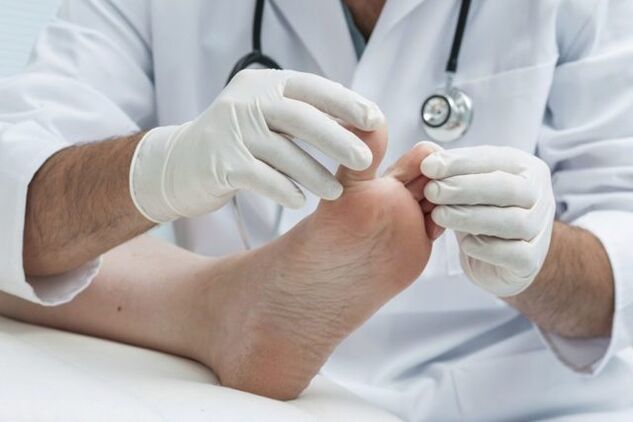
If you notice any change in the nail or skin on the little finger, you should see a dermatologist. The doctor will examine the scratching and take it with you for analysis. In the case of skin lesions, scaly scales are sent to the laboratory, which can easily be separated from the skin.
If the nail plate is affected, the doctor will cut off a small piece of the nail and take a swab of the exudate under the nail plate. This material is sent to the laboratory for microscopic analysis. Based on the studies carried out, the optimal treatment regimen is selected.
Treatment principle
To treat the fungus on the little finger, external antifungal drugs are used. To get rid of the disease faster, you need to:
- Monitoring of personal hygiene;
- take regular foot baths;
- treat the skin around the affected area with an antiseptic;
- Improve immunity.
To prevent fungal spores from spreading to healthy nails, separate manicure tools, preferably disposable files, should be used for the affected finger. It is imperative to treat the affected area with special products on a daily basis, wash the skin thoroughly, conduct antiseptic treatment, and only wear socks and shoes made of natural breathable materials.
Medication
In the treatment of fungal diseases of the feet and a fungus of the little toe, means for external use are used, complementing the treatment with antiseptic baths. In severe cases, the doctor will prescribe pills for the fungus.
Only a doctor can choose the exact medicine after testing. The drugs listed are effective against yeasts and molds. The cream should be applied twice a day to previously washed and dried skin. In this case, the agent must be applied not only to the affected skin, but also to the healthy epidermis around the infected nail.
In order to avoid the spread of spores on healthy areas of the skin, it is necessary to additionally use antiseptics. For this purpose, hydrogen peroxide, a solution of potassium permanganate or iodine are used.
Means in the form of varnish remain on the nail plate for a long time, ensure effective destruction of pathogenic microflora and prevent further spread of fungal spores.
Treatment for nail fungus takes a long time. On average, the course of therapy lasts 9 months. You cannot stop taking medication until a healthy nail has grown.
Before painting, the nails must be steamed, filed and degreased with an alcohol solution or napkins containing alcohol.
At the initial stage of onychomycosis on the little finger, you can use strong antifungal creams. The drug is applied after a foot bath and pedicure. In order for the medicine to penetrate deeper into the nail plate, it must be carefully sanded to get rid of any microcracks.
In severe cases of onychomycosis or if the disease comes back, the doctor may prescribe pills. They have a systemic effect on the entire body and help to fight the pathogenic microflora from within.
Remove nail

The nail on the little finger is small, almost invisible, and grows back quite quickly, so the doctor can recommend a radical method of treatment - removal of the nail infected with the fungus. The procedure itself is quick and painless. There are also special sets with uric acid that soften the nail and promote its independent separation from the nail bed.
After removing the nail, a special ointment and bandage are applied to the finger. After 5-7 days, a crust will form under the bandage that can be removed. The nail will grow back in about a month. All this time it is necessary to use antifungal drugs to prevent re-infection.
The benefits of removing the nail plate minimize the risk of contaminating healthy nails. This way, you can get rid of the fungus in a day, but you will have to wait for the nail to grow back completely. On average, a nail on the little finger is completely restored in 3-4 months.
Home remedies
Folk remedies are advisable to use for milder forms of the fungus. They help prevent the spread of spores of pathogenic microflora on healthy fingers, so they perfectly complement drug treatment.
- Lemon juice effectively removes yeast. It can be used in case of a nail infection with Candida fungus, for this it is enough to cover the nail with lemon juice twice a day.
- Mushroom paste will help defeat the disease. To prepare the product, you need to mix a teaspoon of baking soda with the same amount of water and apply it to the nail under a compress. The compress should be kept for half an hour, the process should be repeated twice a day until the symptoms completely disappear.
- Baths form the basis of folk treatment of the fungus. They can be prepared with iodine, baking powder, salt, hydrogen peroxide, boric acid powder, or herbs. For every liter of water you need to take a tablespoon of the selected product. The bath must be done for 20 minutes every day before going to bed.
Folk remedies perfectly prepare the skin and nails for the application of ointments from the fungus. As a standalone remedy, they are ineffective, so traditional medicine cannot be relied upon completely.
How can you avoid infection?
Prevention of fungal infections depends on personal hygiene. You should always wear slippers, not use someone else's towels, or wear someone else's shoes when visiting public showers and swimming pools.
Once a person has developed athlete's foot, antifungal creams should be used regularly for prevention. To do this, it is enough to apply it to the skin 1-2 times a week.
Foot hygiene plays an important role in protecting against fungus. It is necessary to wash your feet daily with antiseptic or tar soap, wear only socks made of natural fabrics, and choose comfortable shoes made of breathable materials.
Fungus between the toes: symptoms (PHOTOS), the best ointments and folk remedies for treatment
Among all types of fungal diseases, foot lesions are the most common.
One type of foot mycosis is a fungus between the toes. The disease causes severe itching and peeling of the skin, resulting in severe discomfort. You can get the mushroom in any public place with high humidity.
This type of mycosis occurs in both adults and children.
The reasons for the development of the disease
The fungus between your toes is a type of athlete's foot. The disease is contagious and difficult to treat. The course of therapy can take several months.
The fungus between the toes develops for the following reasons:
- Failure to observe foot hygiene;
- Visiting public places with high humidity;
- wearing someone else's shoes;
- use someone else's towel.
The easiest way to get infected is to go to public showers without proper protective gear. The absence of individual slippers in a communal shower, gym locker room, or even a moderately high temperature sauna can cause a fungal infection between the toes, the symptoms of which do not call into question the nature of the skin peeling.
The development of fungus between the toes of a child and an adult can be caused by neglect of personal hygiene. Insufficient foot care leads to the accumulation of sweat and dirt in the interdigital spaces.
This is a favorable breeding ground for the fungus.
Since some pathogens are always present in the human body, the development of a fungal microflora on the skin can take place without contact with a potential source of infection.
The fungus on the feet and the skin between the toes is a highly contagious fungal infection. You can get sick trying on someone else's shoes if one person is infected. This is because fungal spores settle on the inner surface of the shoe and easily get onto healthy skin.

You can even get sick when a family member is battling a yeast infection. The fact is that the spores of the pathogenic microflora settle on everything that has come into contact with the affected skin. Spores are retained in the pile of carpets, on towels and on the surface of the bathroom and shower. The slightest contact with these objects is enough for the spores to penetrate healthy skin.
However, not everyone gets the fungus from using someone else's towel or shower. Factors provoking the development of fungus between the toes:
- decreased immunity, both general and local;
- the presence of damage to the skin of the feet;
- heavy sweating;
- long-term use of antibiotics;
- frequent stress;
- wear shoes that are too tight;
- Conditions that cause poor blood flow to the lower extremities.
Long-term drug therapy and frequent stress weaken the body and make it susceptible to various bacteria and fungi. Wearing tight shoes leads to a violation of local blood circulation, which reduces the immunity of the feet. This creates favorable conditions for the rapid development of pathogenic microflora.
The fungus of the foot and interdigital spaces is particularly susceptible to people with diabetes, cardiovascular disease, and varicose veins of the lower extremities. All these pathologies lead to a deterioration in local metabolic processes and a violation of cellular immunity, increasing the risk of infection with a fungus.
Factors that provoke the development of an infection include wearing very tight shoes made of inferior materials, synthetic socks, and profuse sweating. All of this creates a favorable environment for the development of pathogenic microflora. With profuse sweating, the process of increasing the fungal population is accelerated, since this microflora loves a hot and humid environment.
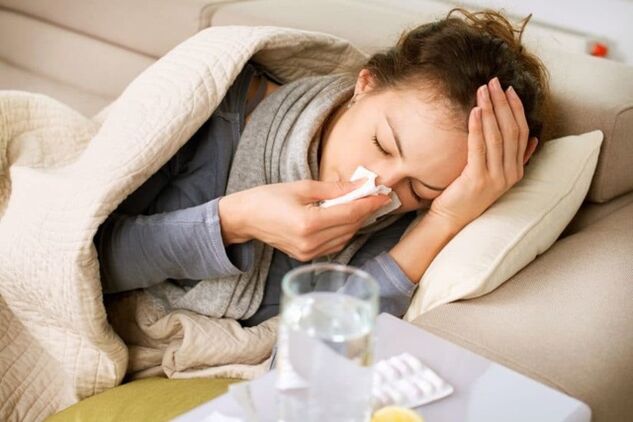
Home remedies
Traditional medicine knows how to get rid of the fungus between your toes. To do this, it is suggested to use peels and solutions to treat the skin.
- Pour 2 sachets of boric acid into a basin of water and stand your feet for 20 minutes. Apply every other day.
- An effective bath for mycoses - 4 liters of hot water, 2 tablespoons of soda, salt and iodine. Take 15 minutes, then lubricate your feet with medicated ointment.
- You can use applications from a soda solution with vinegar. To prepare the product, dissolve a teaspoon of soda and vinegar in half a glass of water. Then a cotton swab is moistened in the solution and the skin is treated thoroughly.
The use of tar or laundry soap is recommended for daily foot hygiene. They perfectly degrease the skin and have a weak antifungal effect.
To prevent fungus from developing between your toes, thorough foot hygiene is essential. It is important to always bring your own rubber slippers to the pool, gym and sauna. You should not use other people's hygiene items or try on someone else's shoes as these may contain fungal spores.
From everything that has been said, we can conclude that athlete's foot is an extremely dangerous disease. The consequences of the disease can be extremely negative for human health. Do not self-medicate so as not to cause complications.

















